A Whole New World
Over the next 10 to 20 years you will be awe struck by the greatest scientific and technological advancements in the history of the human race. As with the emergence of the personal computer in the 1980s and the Internet in the 1990s, everyone will be ‘taken by surprise’ and find themselves in a whole new world.
You, your children, and your grandchildren will need to develop new thinking skills to meet the challenges of the future. Knowing the emerging technological trends are critical for career planning, business survival, and prudent investment.
I built my career in finance on Wall Street by studying emergent technology’s impact on finance, business, and marketing. My college majors in biology, philosophy, and economics helped me visualize whole integrated systems and identify emergent singularities transforming a system. I became a ‘go-to-guy’ on economic feasibility and competitive positioning strategies for numerous companies with product innovations. I helped many companies obtain venture capital and issue a public stock offering. To stay current I read the latest articles, attended scientific conferences, and worked with many scientists.
When the personal computer spread in the 1980s almost everyone was unskilled in computers. Whole industries either changed or went out of business, such as typesetting, financial and legal documentation and printing, office typewriters and printing, research, and so on. Many investments were wiped out. Millions had to learn new skills and find new careers. Technology changed, such as CDs, DVDs, cell phones, cable TV, etc.

Likewise, when the Internet spread in the 1990s all were again taken by surprise. The digital age has changed everything. Whole industries and giant corporations went out of business. Millions had to learn new skills to get a job. The film, TV, publishing, book, newspaper, music, theater, design, marketing, advertising, distribution, retail, customer service, etc. industries all changed.
In the next 20 to 40 years the world economy will be driven by unlimited fusion energy, quantum computers, nanotechnology, artificial intelligence, etc., and the world economy will focus on building a multi-planetary economy of the whole solar system and beyond.
We can solve the issues of fossil fuel and resource depletion, climate change, and overpopulation. Humans have always developed new resources to survive, there are virtually no fixed resources and no limits to growth.
Human Survival Is Driven By New Technology
We as a human species have evolved for one to two million years and have socially progressed through our cognitive abilities to change our environment, adapt to new conditions, explore and discover the world, and develop new tools and technology for survival and improved quality of life. This process of the human condition will never fundamentally change; we will always be confronted with new problems that challenge human existence.
Paleolithic food gathering societies grew and eventually reached a crisis where their technological base could no longer sustain an expanded population. Society had to develop complex tools for sophisticated hunting along with new knowledge of arts, crafts, forest agriculture, construction, navigation, astronomy, botany, zoology, geology, medicine, mathematics, metallurgy, and so on.
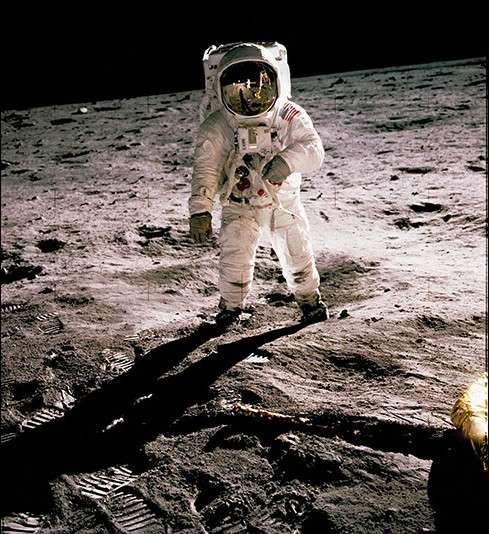
Hunting societies eventually reached a crisis with sustaining a population that outgrew the hunting technologies. Neolithic society had to develop new agricultural systems and new scientific knowledge to support larger populations. This led to the development of urban civilizations with calendars, writing, mathematics, astronomy, medicine, machines, arts, crafts, metallurgy, industry, irrigation, navigation, science, ocean travel, and more. Later fossil fuel generated steam power and electricity enabled more complex energy utilization and industrialization. Nuclear energy further advanced society into a new age.
Through all of this, society has continued to exhaust so-called ‘limited resources’ and developed new resources through scientific knowledge and innovation. What was once perceived as a simple rock became a metal ore used for making alloys, tools, construction, industry, transportation, conducting electricity, telecommunications, nuclear energy, and space travel to distant planets.
We as a species continue to face the existential dilemma of sustainability. It may be debatable exactly how long fossil fuels will maintain our society, if climate change will actually cause disaster, if overpopulation will exhaust so-called limited resources, etc., etc. ad infinitum. But no matter the outcome, the need to develop new science and technologies will not change – it is our key to survival.
The answer lies in our hands – human creativity is unlimited, and we can create the greatest economic and technological boom in history. We can build a world of economic development, a higher standard of living, and higher knowledge and culture. We can sustain billions of people with a quality of life, expand civilization into the solar system and beyond, and solve the fundamental problems of science. We and our children can experience a new world of possibilities in the 21st Century and beyond.
Hydrogen Based Fusion Energy

Fusion energy tokamak reactor
We need hydrogen-based fusion energy, it will solve all of our energy needs and will drive massive economic growth. Today there is a full global development initiative that has made great breakthroughs in recent years.
Fusion energy can supply the world’s energy needs for centuries. It offers unlimited super high energy yield by fusing hydrogen-deuterium isotopes from seawater into helium in a high temperature, high pressure confined plasma. It is safe, low risk, non-radioactive, has no nuclear waste, no plutonium, and has non-nuclear proliferation risk. The plasma reactors can separate molecular structures to provide critical elements and rare metals. Reaching fusion breakeven involves advanced sciences of complexity, quantum mechanics, nuclear physics, non-linearity, plasma physics, superconductivity, lasers, particle acceleration, magnetohydrodynamics, and more.
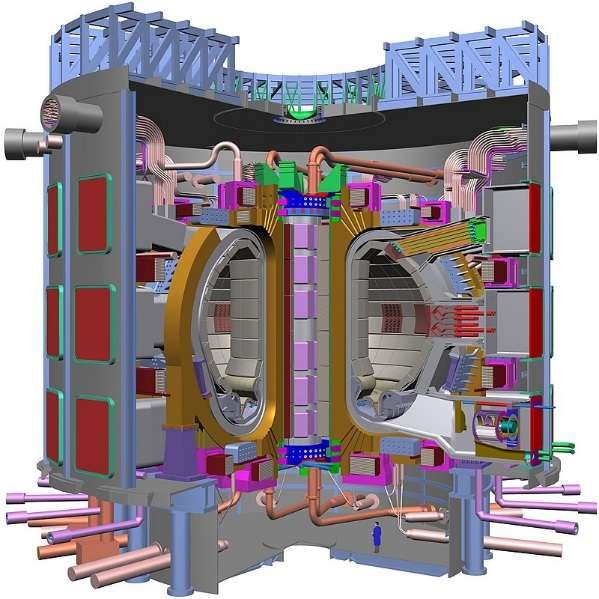
ITER hydrogen fusion energy reactor
Nations, investors, and corporations are rushing to develop clean fusion as a solution to such issues as climate change, overpopulation, replacement of fossil fuels, world economic growth, waste, and landfill recycling, elimination of toxic waste, recycling nuclear waste, unlimited supply of raw materials, high-speed Maglev trains, mass saltwater desalinization, irrigate the deserts, etc.
The International Thermonuclear Experimental Reactor (ITER) focuses on confined plasma fusion and involves 35 participating nations to jointly develop fusion energy breakeven by 2025 and full fusion power by 2035. The seven primary nations leading the effort are the U.S. Russia, China, India, Japan, South Korea, and the EU.
There have also been breakthroughs using high-powered laser beams to achieve fusion energy at the National Ignition Facility at the Lawrence Livermore National Laboratory.
According to the U.S. Energy Information Administration, hydrogen fusion will yield 320 billion J/g (Joules per gram) of energy, compared to coal at 27,000 J/g, oil at 46,000 J/g, and fission nuclear energy at 82 billion J/g.
Fusion energy will revolutionize the world into a higher advanced technological society. This revolution is equivalent to the revolutions of Paleolithic hunting, Neolithic agriculture, urban civilization, and steam-electrical industrial society. When we obtain sustainable fusion energy it will be integrated with new quantum computers, superconductivity, nanotechnology, space propulsion, artificial intelligence, smart materials, Maglev trains, saltwater desalination, and more. Fusion will provide faster space travel and energy sustainability for colonization of the Moon, Mars, other planets, moons, and asteroids.

The fusion Plasma Torch will be able to recycle the world’s garbage, toxic waste, used materials, plastics, and nuclear waste. The high-energy plasma can convert and separate materials into their constituent elements, providing unlimited resources. Strong magnets separate the different elements in the high-temperature plasma.
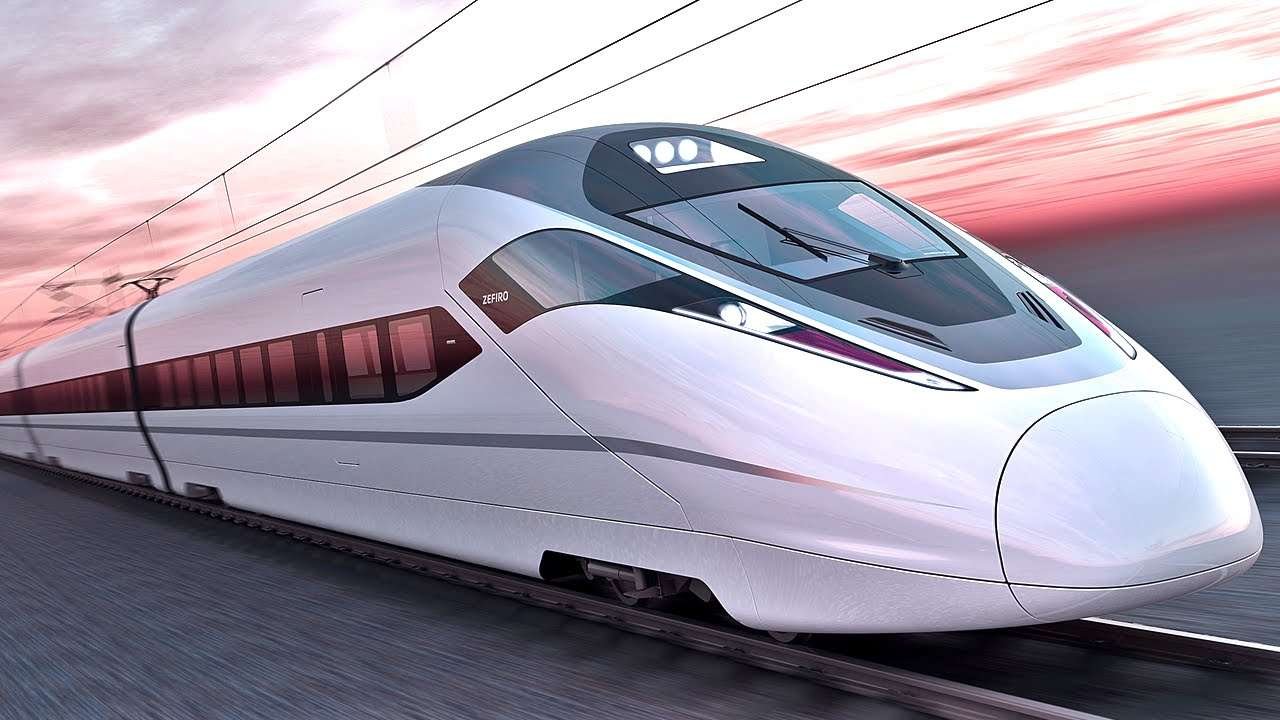
Fusion energy will provide energy for worldwide high-speed Maglev Trains (magnetic levitation). Maglev trains travel in frictionless tubes at speeds up to 400 MPH.

Fusion will provide energy for mass seawater desalinization.
Companies involved in developing fusion energy include: Commonwealth Fusion Systems (Bill Gates), ENI Italy, General Fusion (Jeff Bezos), Tri Alpha Energy (Paul Allen), Venrock (Rockefeller), Helion Energy (Peter Thiel, Jeffrey Skoll), AE Technologies (Google), General Atomics/General Dynamics, Tokamak Energy, Sap Energy/Chevron, Hyperjet Fusion, Chevron Oil, Shell Oil, and others.
Quantum Computers

Over the last few decades, a Second Quantum Revolution has brought about the development of Quantum Computers (QC) which are supercomputers that will revolutionize computing, analysis, and complex problem-solving. They are becoming more tangible every day with the work being developed by many high-tech companies. I
QC has a different architecture, instead of silicon-based processors it uses superconductivity circuits and trapped atomic ions. Quantum computers use the principles of quantum mechanical phenomena at the atomic and subatomic levels to tackle extremely difficult tasks that ordinary computers cannot perform.
Quantum Superposition: two or more quantum particles or states are superimposed on each other. Superimposed particle combinations can be in all possible states and positions simultaneously. This allows for performing multiple tasks at the same time.
Quantum Entanglement: particles correlate and interact with each other, acting the same simultaneously at a distance, to perform computing. Qubits can interact at a distance.
QC uses quantum bits, or qubits, that are the basic unit of memory that uses orientation of a photon of light or the rotation of an electron. A classical computer encodes data in binary bits as 0s or 1s in only one of four possible states, being either 01, 00, 10, or 11. With quantum superposition, the qubit can use all four states simultaneously.
Quantum computers have capabilities far beyond current computers. QC are 1,000 times faster and can perform more complex calculations, more multiple functions simultaneously, and process larger amounts of data. They reduce problem-solving from days or hours to seconds. In chess, a traditional computer examines 200 million moves per second, whereas quantum computers examine one trillion moves per second.
Quantum computing applications:
- Computational–military, science, corporate, government, vehicular traffic, air traffic, NASA mission planning
- Simulation and models – quantum mechanics, biology, chemistry, astrophysics, plasma physics, genomics, superconductivity, pharmaceutical, aerospace
- Particle physics – simulations, experiments, accelerators, plasmas, high energy systems,
- Cybersecurity and cryptology – securing data, cracking codes, hack proof data encryption, fraud detection, defend against cyberattacks, track down cyber criminals
- Healthcare – DNA research, new drug development
- Financial – modeling, forecasting, evaluate markets, investment
- Artificial intelligence – machine learning, pattern recognition
- Weather – forecasting, climate models, disaster preparedness, agriculture, transportation
Companies developing quantum computers – Airbus, IBM, Microsoft, Google, Intel, AT&T, Nokia, Honeywell, Hewlett-Packard, Amgen, Biogen, Amazon, Zapata, Rigetti, IonQ, QCWare, D-Wave, Quantum Circuits, Xanadu, and others.
Nanotechnology
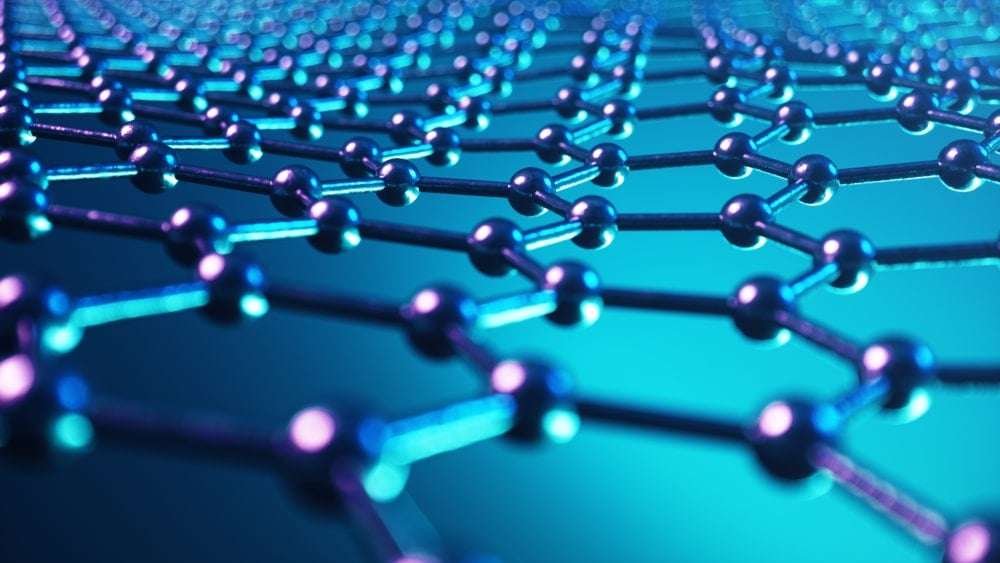
Nanotechnology, or Nanotech, is revolutionizing the technical, industrial, and medical sectors. Nanotechnology is applied quantum mechanics, manipulating atoms and molecules for fabrication of molecular structures, nanotubes, assemblies, materials, sensors, electronics, and devices. The National Nanotechnology Initiative defines nanotech as the manipulation of matter with at least one dimension sized from 1 to 100 nanometers (a nanometer is one billionth of a meter). Nanotech utilizes almost all physical sciences and is applicable in high tech, information technology, electronics, defense, security, biotech, medicine, transportation, energy, food, and environmental science.
The U.S. National Nanotechnology Initiative was launched in 2000 by a coordinated multiple federal government agencies and departments to support and foster nanotech scientific research and development in the private sector and education.
Nanotech makes materials stronger, lighter, and more durable. Extremely small nanoscale devices can provide sensors, monitors, and conduct repairs on the molecular scale.
Nano materials, components, and devices include:
- Nano Electromechanical Systems-NEMS – nanoscale devices integrating electrical and mechanical functions.
- Quantum Dots – tiny semiconductor particles with optical and electronic properties.

- Molecular Assemblers – nano molecular machines which guide chemical reactions and molecular fabrication used in manufacturing, construction, and self-replication materials.
- Fullerene – programmable nano scale carbon molecular mesh geometric structure; used in semiconductors, batteries, and electrical devices.
- Graphene – a nano carbon molecular single layer lattice structure, with high strength flexibility, superior electrical conductivity and transmission, offers low weight components. Applications include: transistors, display screens, mobile devices, hydrogen fuel cell storage, biosensors, light processing, efficient batteries, solar energy cells, waste removal, environmental protection, coatings, and other.
- Claytronics – programmable nanoscale robotics to create 3D objects.
Nanotech energy applications include: higher efficient fuel consumption, increased solar energy absorption, higher capacity hydrogen fuel cells, waste conversion to energy, bio ethanol production, more effective battery energy storage, oil and gas extraction, and more.
Nanomedicine applications in drug delivery, health monitoring, cancer treatment, MRI, PET, cleaning plaque from blood vessels, and more. Environmental uses include water and air purification, saltwater desalinization, oil spill cleanup, pollution and toxic waste cleanup, and environmental sensors, and more.
Industrial applications include lighter vehicles and machinery, better protective coatings, stronger construction materials, water and corrosion resistance, high performance electronic components, body armor, ultra-black materials for camera and telescope lens, higher definition TV and computer screens, road pavements, and other.
Leading nations in nanotech R&D include: U.S., Germany, Japan, France, Russia, China, and South Korea. Companies developing nanotechnology:
- Computer- electronic: IBM, NEC, Fujitsu, Hitachi, HP, Samsung, Motorola, Mitsubishi, GE, Microsoft, Canon
- Food: Kraft, Unilever, Nestle, Heinz, Sara Lee
- Drugs/ healthcare: GlazoSmithKline, Smith & Nephew, Merck
- Oil: BP, Exxon, Chevron, Shell, Haliburton
- Clothing: Burlington, Nike, Gap
- Aerospace/ defense: Lockheed Martin, Boeing, Qinetig, Raytheon
- Cosmetics: L’Oreal, Body Shop, Boots
- Chemicals: Dupont, Degussa, Dow, Hekel, ICI
- Agriculture: Syngenta, Monsanto, Bayer
- Auto: Toshiba, Nippon, BMW, Renault, GM, Ford, Caterpiller
Artificial Intelligence

Artificial Intelligence (AI) provides computer thinking systems which offer automated processing, analysis, presentation, comprehension, and approximate conclusions of complex data for science, industry, finance, government, military, healthcare, infrastructure, and other areas.
Artificial Intelligence is computer simulated thinking and problem solving. The machine is programmed to perceive its environment and take action to achieve its goals. AI uses machine learning algorithms and software to replicate or mimic human cognition characteristics and thinking processes. It recognizes patterns in behaviors and creates its own logic. The algorithms learn exclusively from the input data and from experience, then it does what it is programmed to do. Algorithms can predict sequences, but offer no comprehension of the logic behind its decisions.
AI does not, and cannot, fully function as the human mind. According to computer science and artificial intelligence pioneer Alan Turing, “Computers are limited to algorithms, humans can do non-algorithmic computable things. Computers are fast but not more intelligent.” It is a mistake to attribute understanding and creativity to mechanical algorithmic machines.
Artificial Intelligence uses several cognitive applications, such as:
- Machine Learning – computer algorithms that automatically self-improve through experience, models that make predictions or decisions without being programmed to do so.
- Natural Language Processing – software application to process and analyze natural language data and speech recognition.
- Optimal Character Recognition – electronic conversion of images into encoded text, used for date entry, scanning images and documents
- Computer Vision – gaining high-level understanding from digital images or videos.
- Artificial Neural Network – a computing system model of biological neural networks. Artificial neurons signal and interact to process input and output data.
- Robotic Process Automation – business process automation technology that integrates different applications for robotic machines to perform multiple tasks.
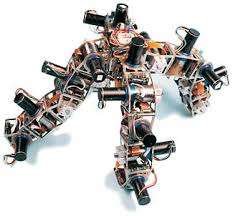
Self-Reconfiguring Modular Robot
Self-Reconfiguring Modular Robot – is a robot that can change its shape by rearranging parts in order to adapt to new circumstances or damages. It can connect and disconnect with other robots to form new shapes and tasks, such as a bridge. It becomes worm like to go through tunnels, spider like for uneven terrain, and into a ball for flat ground. Applications: space exploration, cleaning, repairs, maintenance, surveillance, monitoring, deep sea exploration, mining, search and rescue, disaster relief, and more.
Swarm Robotics – coordination of multiple robots as a system using collective behavior. Uses artificial swarm intelligence applications and wireless transmission systems. Applications: drones, agricultural shepherding, forest fires, mining, search and rescue, environmental monitoring, security surveillance, disaster relief, deep sea exploration, military, and more.
Artificial Intelligence Applications:
- Computer: voice recognition, face recognition, GPS, virtual reality, language translation, cybernetics, brain computer interface.
- Industry: robotics, nanotechnology ,smart materials, sensors, systems integration, diagnostics, logistics, manufacturing, transportation, communication, supply chain, self-driving vehicles, machine learning, waste management, material handling, traffic control, oil and gas exploration, 3D printing, health and safety, environmental management, electrical distribution, utilities.
- Business: planning, monitoring, accounting, job search, marketing, product development, customer service, data mining, publishing.
- Medical: diagnostics, screening, therapy, treatment, radiology, neuroscience, drug development, telemedicine, cancer therapy, gene therapy, nanomedicine.
- Security: cybersecurity, surveillance, fraud detection, military, law enforcement.
- Media: imaging, design, film, music, graphics, gaming.

Swarm robotics
Companies developing Artificial Intelligence include: Amazon, Apple, Google, Microsoft, IBM, Intel, Facebook, Twitter, Deep Mind, Siemans, and many others.
Space Colonization
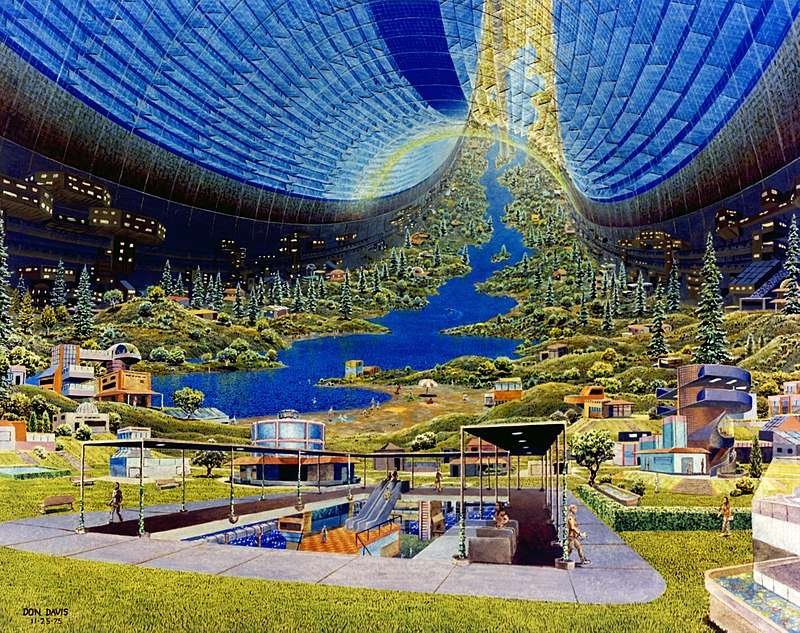
I’ve been asked by many people: Why not fix the problems on Earth instead of going into space? My answer: Why not both? Space exploration is not only necessary for human survival, it is in our nature to explore, discover, create, and build. Humans master the principles of the universe to change the universe and create new laws in the universe.
The space program generates ten-fold growth in the economy, just like NASA did in the 1960s, and develops thousands of technical products and solutions in the consumer economy. Many of today’s technology was driven by the space program – digital computers, lasers, digital telecom, new alloys, smart materials, Internet, biotech, nanotechnology, artificial limbs, solar cells, image sensors, and more. The U.S. cannot be left behind, the Moon and Mars will be colonized and mined by private corporations, China, Russia, Japan, India, Germany, Europe, UK, UAE, Kuwait, Saudi Arabia, Israel, Canada, Australia, South Korea, etc.
The space program is transforming into private business commercialization, without taxpayer funding. Top billionaires (Jeff Bezos, Elon Musk, Richard Branson, Mark Zuckerberg, Google, others) and corporations are rushing to get into space to make $trillions – space tourism, satellite telecom, space stations, space mining, space manufacturing, settlements on the Moon, Mars, asteroids, Jupiter moons, etc. For example, helium-3 is rare on earth and is valued ten times that of gold at $1,500 per gram. The moon is flush with helium-3, which can be used to fuel fusion energy on all the planets and for fusion rocket propulsion intersteller flight.
We also need a multi-planetary defense system against asteroids, meteorites, and comets hitting Earth.
The reasons for space colonization include: human species survival, human advancement, advancement of knowledge an science, save the environment, mining vast materials and energy to alleviate resource depletion, alleviate overpopulation, planetary defense systems against meteors, etc.
What is needed includes: terra forming habitat, life support system, self-replication manufacturing and construction, simulated gravity, radiation protection, medical system, quality of life, social programs, arts and education, leisure and recreation, and more.
Locations include a series of space stations, Moon, Mars, Venus, Asteroid Belt, moons of Jupiter, moons of Saturn, Intergalactic, and Intersteller.
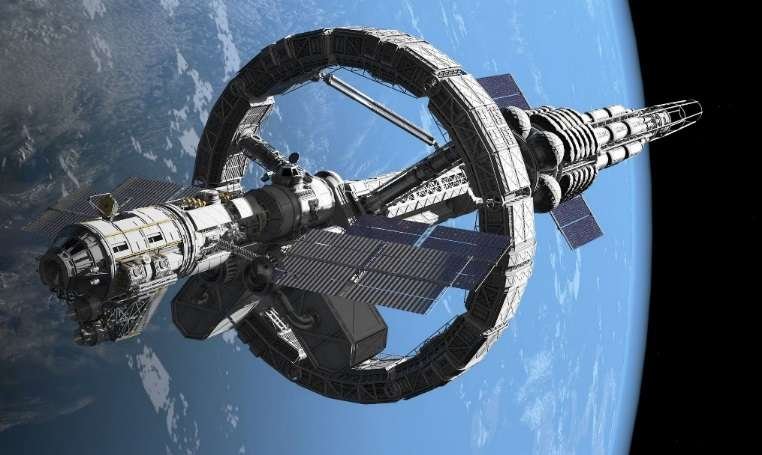
Nations partnering on the International Space Station: U.S., Russia, China, UK, Canada, Japan, France, Netherlands, Germany, Belgium, Denmark, Italy, Norway, Spain, Sweden, and Switzerland.
Nations partnering on Mars colonization: U.S., Russia, China, UK, Canada, Japan, India, UAE, Israel, Australia, France, Netherlands, Germany, Belgium, Denmark, Italy, Norway, Spain, Sweden, and Switzerland.
Agencies planning manned landings and space stations on the Moon and Mars.
- NASA – U.S. National Aeronautics and Space Administration
- European Space Agency-ESA
- Roscosmos – Russian Space Agency
- Chinese Space Agency
- Indian Space Research Agency-ISRO
- Japan Aerospace Exploration Agency-JAXA
- Max Planck Institute, Germany
- National Centre for Space Studies, France
- Unites Arab Emirates-UAE
- Canadian Space Agency
- United Kingdom Space Agency
- Italian Space Agency
- Australian Space Agency
- Israel Space Agency
- Other nations – Brazil, Ukraine, Chile, Pakistan, Finland, Spain, Turkey, Indonesia
- Top corporate partners – Boeing, Lockheed Martin, Northrop Grumman, SpaceX (Elon Musk), Blue, Origin (Jeff Bezos), Planetary Resources (Google), Virgin Galactic (Richard Branson), Moon Express (Naveen Jain), Bigelow Aerospace
Space Travel

Space travel will require faster rocket propulsion. We will be able to travel to Mars in just a few months time. Travel in the solar system and beyond to intergalatic and intersteller space is within our reach.
Superfast space travel models include:
Antimatter propulsion – conversion of matter/ antimatter into energy, higher thrust to weight ratio, intergalactic and intersteller travel.
Fusion propulsion – fusion energy long-term acceleration without a large fuel supply, intergalactic and intersteller travel.
Ion propulsion – ion thruster, form of an electric propulsion, it creates thrust by accelerating ions.
Photon propulsion – thrust from emitted photons, fuel is converted to photons, intergalactic and intersteller travel.
Superconductivity

Superconductivity is a non-linear phenomena resulting from quantum mechanical processes. It is generated in extreme low temperature (at liquid nitrogen) superconductors. Electrical energy is transferred with no electrical resistance or magnetic flux fields, thus resulting in no loss of energy to heat. An electric current through a loop of superconductivity wire can persist indefinitely with no power source. The science is not fully understood as yet.
Uses include: quantum computers, plasma physics, fusion energy, electric power transmission, power storage, particle accelerators, particle detectors, generators, electric motors, transformers, electromagnets, ore sorting, wind turbines, digital circuits, nanowire, cryogenics, smart grids, maglev trains, MRI, telecommunications, mobile phones, and others.
Antimatter Energy
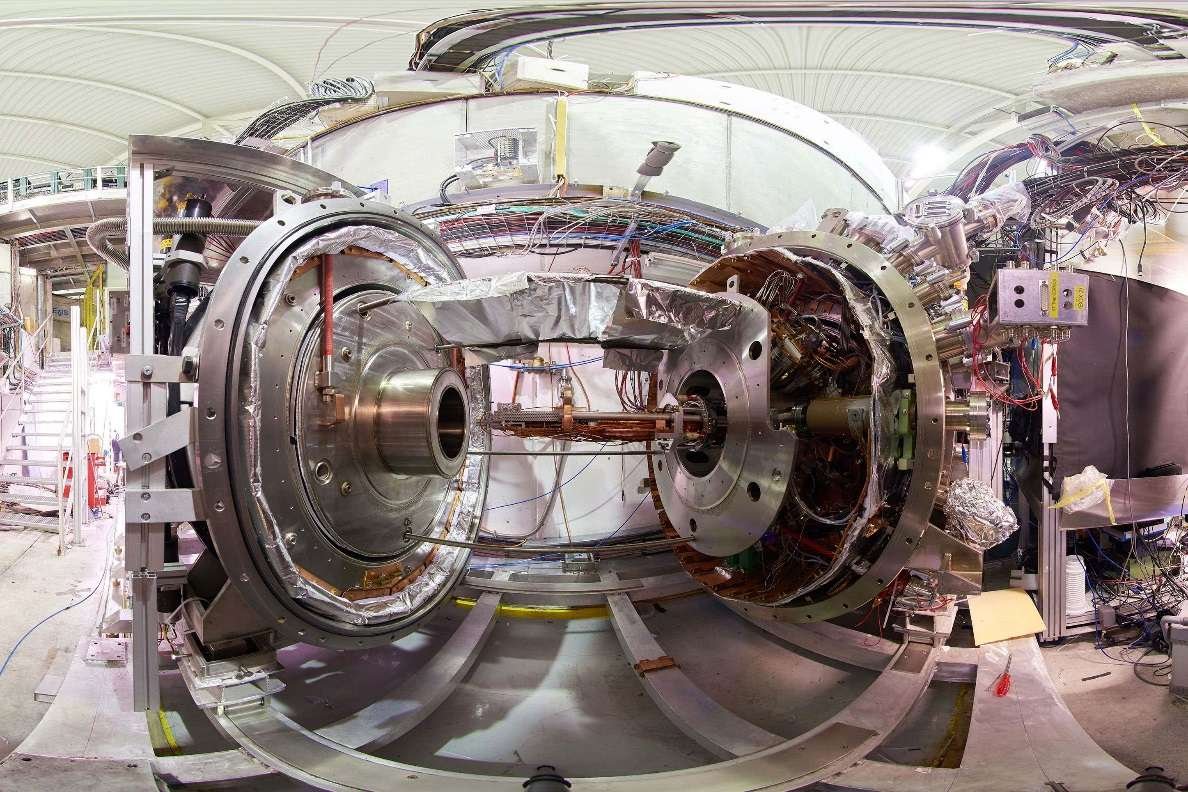
Antimatter energy featured on the Star Trek TV series is real. It is composed of ant-particles which bind together. Antimatter is generated from particle acceleration, cosmic ray collisions, and some types of radioactive decay.
A particle and its corresponding anti-particle have the same mass but different electrical charge. For example, a proton is positive and an anti-proton has negative charge. A collision between particles and ant-particles lends to their mutual annihilation, giving of high levels of energy, such as photons, gamma rays, neutrinos, and other.
According to the U.S. Energy Information Administration, antimatter has an energy density of 90 trillion Joules per gram (J/g) compared to 82 billion J/g for fission nuclear energy and 320 billion J/g for fusion energy.
Antimatter will also provide fuel for high speed interplanetary and intersteller space travel in the form of antimatter catalyzed nuclear pulse propulsion. This will give spaceships a higher thrust-to-weight ratio.
Antimatter has numerous applications in sensors, diagnostics, medical imaging, cancer treatment, and making stronger materials in construction, and manufacturing.
Smart Materials

Smart Materials are artificially designed materials that can significantly change characteristics and functions by external stimuli, such as stress, temperature, moisture, electric fields, chemicals, light, pH, magnetic fields, etc.
Smart polymers – have significant and unique changes in structure and properties in response to environmental stimuli. They play a significant role in pharmaceuticals by directing drug delivery, molecular recognition, separating proteins, and controlling drug doses.
Self-repairing materials – are artificial or synthetic polymers or elastomers automaticaly repair themselves without human intervention. They have micro repair mechanisms to shift material and chemicals to the damaged areas. Uses include coatings, dyes, epoxies, ceramics, metals, plastics, sealants, cement, construction, medicine, manufacturing, vehicles, aerospace, and other.
Shape-memory materials – alloys and polymers that return to their original shape after being deformed. Uses in manufacturing, vehicles, aerospace, electronics, medicine, building materials, construction, telecommunications, robotics, and other.

Programmable matter – has been programmed to change its physical properties and to perform information processing. It can change shape, density, moduli, optical, and conductivity. External stimuli for change include light, electric, magnetic, pressure, temperature, chemical, and other. Examples include: claytronics, liquid crystal displays, complex fluids, metamaterials, smart glass, and more.
Metamaterial – is engineered material that is not found in naturally occurring materials. Their structure allow them to manipulate electromagnetic waves, radiation, light, or sound through blocking, absorbing, enhancing, or bending beyond what is possible with conventional materials. Uses include: optic filters, medical devices, aerospace, solar power, sensors, seismic protection, communication, super-lenses, radome antenna, microwaves, semiconductors, absorbers, cloaking device, radar protection,and more.
Synthetic Biology
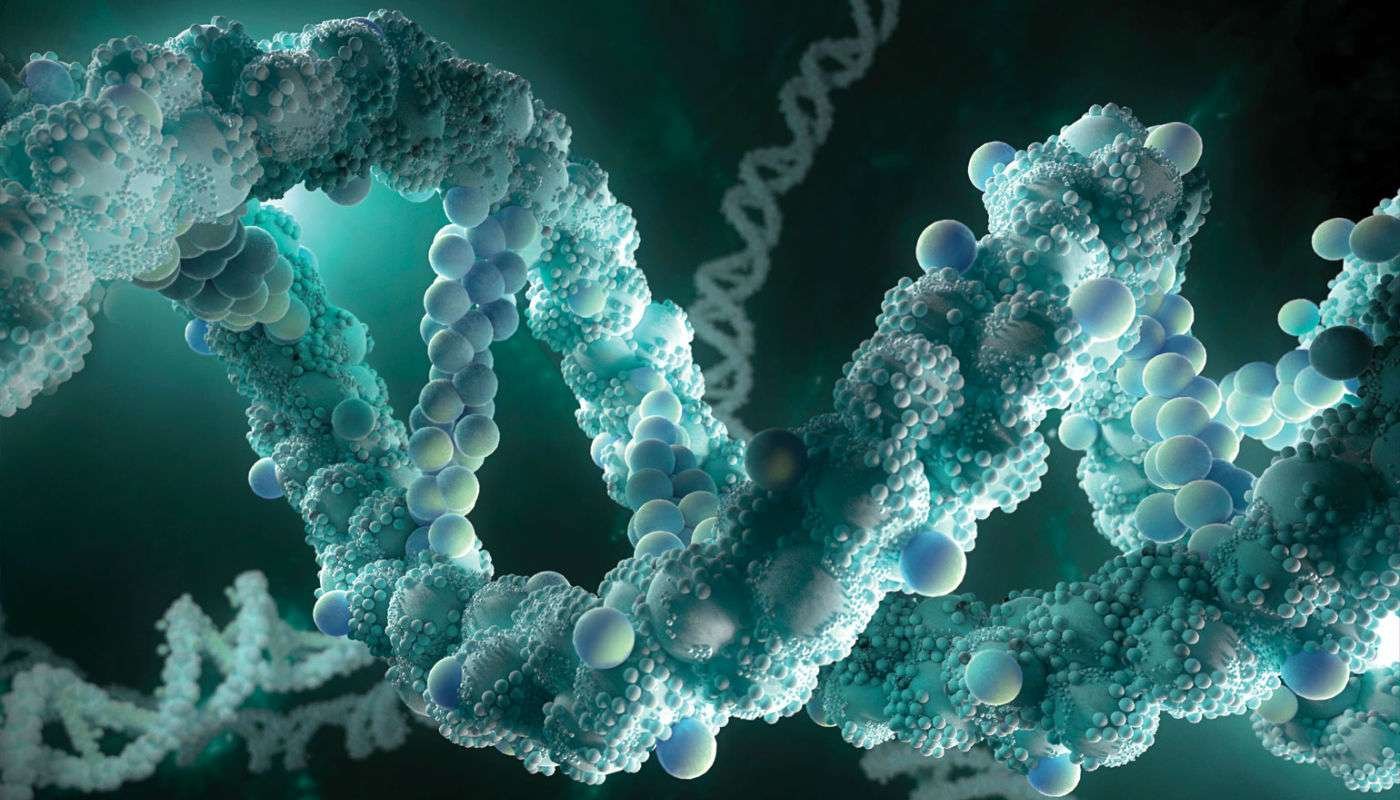
Synthetic biology is a rapidly growing industry due to advances in genetic engineering, tissue engineering, progenitor stem cells, and DNA sequencing. In 2016 there were over 350 companies in 40 countries involved in synthetic biology.
Synthetic biology involves the synthesis, engineering, and programming of biological cells and tissues to perform certain functions. It involves multiple biological, medical, and pharmaceutical sciences. Applications solve problems in medicine, manufacturing, agriculture, energy, environmental science, and construction.
Tissue engineering is a synthetic biology field involved in creating and engineering artificial biological tissue to restore or replace biological parts. It uses progenitor stem cells to produce tissue. Stem cells are undifferentiated cells can develop into any cell type. To ward against human harvesting, stem cells are not taken from human infants or embryos. Induced pluripotent stem cells are derives from altering adult cells.
Medical applications include treatment of bodily damages, diseases and disabilities, pharmaceuticals, vaccines, drug delivery platfoms, tissue engineering, designed proteins, nucleic acids, and others
Biological computer, using computation in living cells to detect and kill cancer cells, tumors, viruses, and bacteria.
Production of food proteins and fats. Plant based food, meat, and dairy. Reduce nutrition deficiencies. Lactose free dairy.
Environmental biosensors to detect heavy metals, toxic waste, pollutants, and pathogenes.
Space exploration plant stains to grow food on Mars and other planets.
Energy – sustainable bio fuels.
Bioremediation to clean up pollutants, oil spills, detergents, plastics, toxic waste, and environmental disasters.
Biofilms, coatings, nanoparticals, bio-circuits, biosecurity systems.
Protein Folding
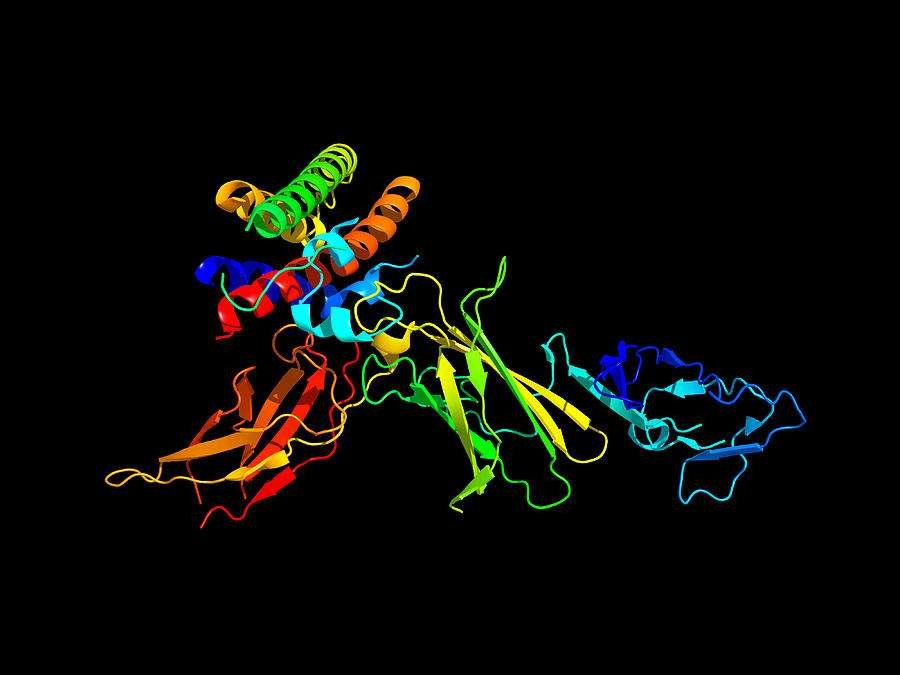
Major breakthroughs have been made in recent years in understanding the core biological process of protein folding. This area still poses one of the major unsolved questions of science. Unknown is the protein folding code, folding mechanism, and polypeptide sequence. Once solved this will provide major revolutionary development in medicine and the life sciences.
Protein folding is the process by which protein develops into three-dimensional structures for biological functions. Proteins are large bio-molecules of chains of polypeptide amino acids, Protein are critical for metabolism, DNA replication, response to stimuli, enzymes, hormones, and cellular development and growth.
Misfolded proteins are associated with cancer, diabetes, Parkinson’s, Alzheimer’s, Huntington’s, cyctic fibrosis, amyotrophic lateral sclerosis-ALS, dementia, cataracts, sickle cell anemia, emphysema, Creutzfedt-Jakob disease, mad cow disease, and others.
Solving protein folding will have numerous applications in curing diseases, treating disabilities, ending age related dementia, medicine, biology, biotech, pharmaceuticals, tissue engineering, agriculture, food, environmental cleanup, and much more.
Brain-Computer Interface
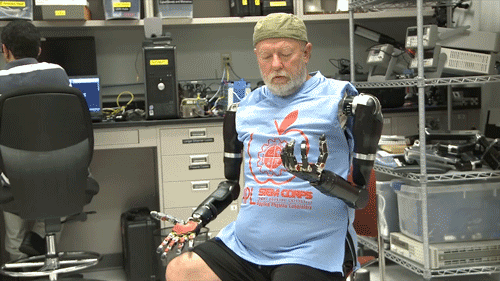
Brain-computer interface (BCI) is a medical procedure used to treat, augment, and repair human neural, sensory, and motor function problems and disabilities. It involves surgery to implant electrodes for communicating brain signals to a computer. Due to the natural plasticity of the brain, implanted prostheses can be handled by the brain like natural biological functions.
BCI uses the application of machine learning algorithm artificial intelligence. BCI measures central nervous system (CNS) activity and converts it into artificial output that replaces, restores, enhances, supplements, or improves natural CNS output. This changes interactions between CNS and external or internal environments.
Retinal implants restore eyesight and treat blindness for patients blinded by retinitis, macular degeneration, eye damage, or other causes. A camera converts light stimuli into electrical signals transmitted to the brain.
Motor oriented neural prosthesis interpret brain signals to move artificial robotic arms and legs. This is used to treat paraplegic patients, amputees, paralysis, motor disabilities, and stoke motor recovery.
Disorder of consciousness-DOC can be repaired and restore mental functions for coma or minimal conscious patients.
Speech augmentation and therapy BCI is used to treat communication problems associated with amyotrophic lateral sclerosis-ALS, Parkinson’s, multiple sclerosis-MS, stroke, dementia, cerebral palsy, and autism.
Complex Adaptive Systems

According to Steven Hawking, complexity will be the science of the 21st century. Complexity theory is revolutionary in showing how the universe is creative, dynamic, and self-developing – it is not an entropic running down universe but is anti-entropic, developing from lower states of energy density to higher states of energy density and throughout. Complex adaptive systems are about non-linear, open dynamic, self-developing adaptive systems, such as evolution, biosphere, climate, neural system, economy, markets, society, solar system, galaxy, biology, physics, geology, chemistry, and so on.
Complex systems are composed of components that interact with each other in self formed networks where distinct properties arise from these relationships. The systems are self-organizing from internal interactions and interactions with the external environment. Complex systems are non-linear where a change of the output is not proportional to the change of the input. Another feature is emergent behaviors that are not apparent from its components, such as the system moving from simple states to higher ordered systems of complexity and energy density.
The Santa Fe Institute is a private research institute dedicated to the multidisciplinary study of complex adaptive systems, including physical, computational, biological, neural, and social-economic systems. It was formed in 1984 by Los Alamos National Labs scientists and Nobel laureates to disseminate new interdisciplinary research in adaptive complex systems.
Accomplishments of the Santa Fe Institute, foundational contributions:
- Artificial Life – computer simulation of life systems and evolution. Applications include: cellular automata, artificial neural networks, synthetic biology, robotics, other.
- Genetic Algorithm – algorithms that provide solutions to optimization problems in economics, climatology, earth systems, code breaking, forensics, machine learning, robotics, power electronics, nuclear physics, biophysics, molecular biology, other.
- Econophysics – using methods in dynamics and physics to solve problems in economics. Applications include: quantitative finance, market price fluctuations, economic scaling, and commodity markets.
- Chaos Theory – is a branch of mathematics focusing random and chaotic behaviors. Complex systems have apparent random states of disorder that are actually governed by underlying patterns and deterministic laws.

- Complexity Economics – complex and self-developing dynamics of economics. Applications include: capital theory, game theory, macroeconomics, voting theory, economic history, computational economics, foreign aid, other.
- Systems Biology – computer modeling of complex biological systems such as genetics, properties of cells and organisms, protein interactions, cancer, cell signaling, network biology, and other.
- Evolution of Human Language – project to trace all human languages to a common ancestor
- Complex Networks – graph modeling of complex systems.
- Machine Learning – computer algorithms that automatically self-improve, models that make predictions or decisions without being programmed to do so
- Swarm Intelligence- simulation modeling of social or biological collective ‘behavior’, such as ant colonies, bee colonies, bird flocking, animal herding, bacterial growth, fish schooling, other. Applications include: robotics, nanotechnology, drones, unmanned vehicles, self-propelled particles, cancer treatment, data mining, machine self-assembly, planetary mapping, and other.
SOURCES
Finance Publications: Barron’s, Bloomberg Business Week, Corporate Watch, The Economist, Forbes, Investor’s Business Daily, Kiplinger’s, Money, New York Times, Robb Report, USA Today, Wall Street Journal, BBC, Fox, CNN, Market Watch, Financial Times, Washington Post, The Guardian, Der Spiegel, IT Business, Harvard Review, Sloan Business Review
Science Publications: 21st Century, Astronomy, CB Insights, Computerworld, Cosmos Magazine, Digit News, Discover, Longevity, New Scientist, Popular Science, Science, Science Alert, Science News, Scientific American, Sci Tech Daily, Smithsonian, Stanford Encyclopedia of Philosophy, National Geographic, Psychology Today, Technology Review, Wired
Institutions: Amazon, Apple, Atomic Energy Commission, AT&T, Bell Labs, CalTech, Columbia University, Cornell University, Department of Energy, Google, Harvard, IBM, INTEL, ITER, Lawrence Livermore Labs, , Los Alamos Labs, Microsoft, MIT, Nanotechnology Initiative, NASA, Oakridge Labs, Oxford, Princeton University, Santa Fe Institute, Stanford University, UCLA
FURTHER READING – EASY TO READ FOR NON-SCIENTISTS
Fusion Energy
- ITER: The Giant Fusion Reactor, Michael Claessons, Springer, 2017.
- An Indispensible Truth: How Fusion Power Can Save the Planet, Francis Chan, Springer, 2011.
- The Future of Fusion Power, Jason Palisi, Justin Ball, WEPC, 2018.
Quantum Computers
- Quantum Computing For Everyone, Chris Bernhardt, MIT, 2019.
- Dancing with Qubits: How Quantum Computing Works, Robert Sutar, Packt, 2019.
- Computing With Quantum Cats, John Gribbon, Prometheus, 2014.
Nanotechnology
- Nanotechnology For Dummies, Earl Bayson, John Wiley & Sons, 2011.
- Nano Comes to Life: How Nanotechnology is Transforming Medicine and the Future of Biology, Sonia Conteia, Princeton, 2019.
- Engines of Creation: The Coming Era of Nanotechnology, Eric Dexter, Anchor, 1987.
Artificial Intelligence
- Artificial Intelligence For Dummies, John Mueller, Lusa Massaron, John Wiley & Son, 2018.
- Introduction to Artificial Intelligence, Rajendra Akerkar, PHI, 2014.
- Introduction to Artificial Intelligence, Philip C. Jackson, Courier Dover, 2019.
Space Colonization
- The Future of Humanity: Terraforming Mars, Intersteller Travel, Immortality, and Our Destiny Beyond Earth, Michio Kaku, Doubleday, 2018.
- Space 2.0: How Private Spaceflight, a Resurgent NASA, and International Partners Are Creating a New Space Age, Rod Pyle, Buzz Aldrin, Ben Bella, 2019.
- The Case For Space: How the Revolution in Spaceflight Opens Up a Future of Limitless Possibilities, Prometheus, 2019.
Tissue Engineering
- Principles of Tissue Engineering, Robert Lanza, Academic, 1997.
- Stem Cells: Scientific Facts and Fiction, Christine Mummery, Academic, 2010.
- Engineering Stem Cells for Tissue Regeneration, Ngan F. Huang, World Scientific, 2018
Superconductivity
- Introduction to Superconductivity, Michael Tinkham, Dover, 2004.
- Theory of Superconductivity, J. Robert Schrieffer, Taylor & Francis, 1971.
- On Superconductivity and Superfluidity, Vitaly L. Ginzberg, Springer, 2008.
Antimatter
- Antimatter, Frank Close, Oxford, 2009.
- Antimatter: The Ultimate Mirror, G. Fraser, Cambridge, 2000.
Complex Adaptive Systems
- Complexification, John Casti, Harper, NY, 1995.
- Complexity: The Emerging Science at the Edge of Order and Chaos, Mitchell Waldrop, Simon & Schuster, NY, 1992.
- Complexity: A Guided Tour, Melanie Michell, Oxford, 2009.
- From Being to Becoming: Time and Complexity in the Physical, Ilya Prigogine, WH Freeman, San Francisco, 1980.
- Introduction to the Theory of Complex Systems, Stefen Thurber, Oxford, 2018.
- The Origins of Order: Self-Organization and Selection in Evolution, Stuart Kaufman, Oxford, 1993.
- Paradigm’s Lost: Images of Man in the Mirror of Science, John Casti, Wm. Morrow, NY, 1989.
- The Quark and the Jaguar: Adventures in the Simple and Complex, Murray Gell-Mann, WH Freeman, San Francisco, 1994.



